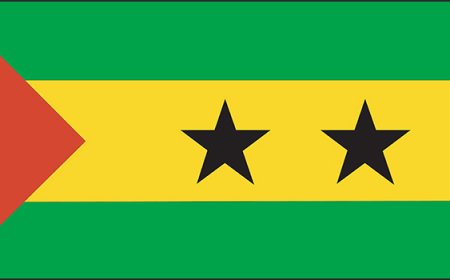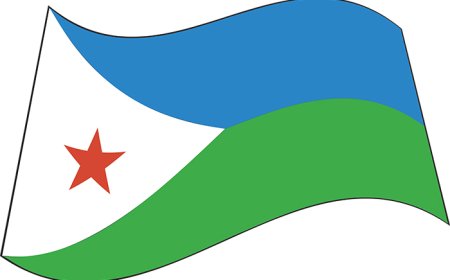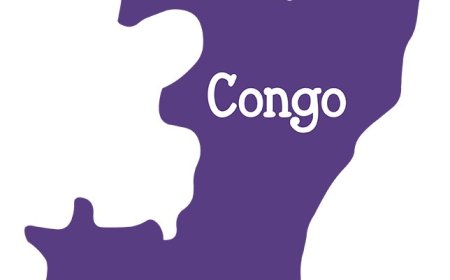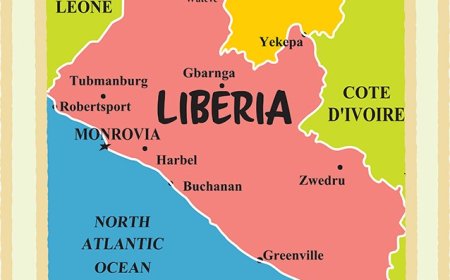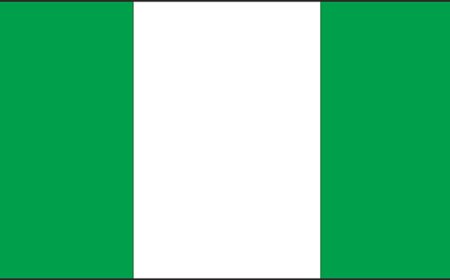Equatorial Guinea for Students: Geography, Culture, and History of Africa’s Spanish Nation
Discover the people, geography, and unique language and history of Equatorial Guinea in this student-friendly country profile. Includes quiz and vocabulary.
🌍 Introduction: A Small Nation with Two Parts and a Big Story
Equatorial Guinea is a small country in Central Africa, but it’s full of surprises. It is the only African country where Spanish is the official language, a result of Spanish colonization. Even though it’s small in size and population, Equatorial Guinea is one of Africa’s wealthiest per person due to its oil and gas resources. The country includes both a mainland territory and several islands, giving it a unique mix of geography, culture, and traditions.
🗺️ Geography and Environment
Equatorial Guinea is made up of two main parts:
The mainland, called Río Muni, which borders Cameroon and Gabon
The island of Bioko, where the capital city Malabo is located, off the coast in the Gulf of Guinea
There are also smaller islands, such as Annobón and Corisco, spread across the Atlantic.
The mainland region features tropical rainforests, rivers, and mountains, while Bioko Island has volcanoes, black-sand beaches, and dense jungle. The climate is hot, humid, and tropical, with a long rainy season and rich biodiversity.
Equatorial Guinea is home to:
Endangered primates like chimpanzees and colobus monkeys
Colorful birds, snakes, and amphibians
Marine life, especially around Bioko Island
The country’s natural beauty is protected in reserves like the Monte Alén National Park, one of Central Africa’s most important conservation areas.
🏛️ Government, Language, and Population
Equatorial Guinea is a presidential republic, but it has been ruled by the same family since the 1970s, and many global groups consider its government authoritarian. Elections are held, but political freedom is limited, and the press is controlled by the state.
The capital city is Malabo, located on Bioko Island, but a new city called Ciudad de la Paz (formerly Oyala) is being built on the mainland to serve as a future capital.
The population is about 1.7 million people, making it one of the least populated countries in Africa. The largest ethnic groups are:
The Fang, who live mostly on the mainland
The Bubi, the native people of Bioko Island
Other smaller groups such as the Ndowe, Annobonese, and Kombe
The official language is Spanish, but people also speak French and Portuguese (the country joined the Portuguese-speaking African nations group). Indigenous languages like Fang and Bubi are spoken in homes and communities.
Most people in Equatorial Guinea are Christian, especially Roman Catholic, though traditional African beliefs are still practiced, especially in rural areas.
🎭 Culture and Daily Life
Equatorial Guinean culture reflects a blend of African traditions and Spanish influences. In cities, people wear modern clothing and work in offices, schools, and businesses, while rural communities follow more traditional lifestyles, including farming, fishing, and craftwork.
Music and dance are important in daily life. Drumming, call-and-response singing, and storytelling are common, especially during festivals. Traditional dances are performed during weddings, religious holidays, and community celebrations.
Popular dishes include:
Sopa de pescado (fish soup)
Cassava and plantains
Stews made with peanut, palm oil, or okra
Families are often close-knit, and elders play a big role in decision-making. Education is officially free, but many schools lack teachers or supplies, especially outside of cities. The government has invested more in education in recent years using money from oil exports.
📜 History: From Colonial Rule to Modern Oil Boom
For centuries, the region was home to various African ethnic groups who fished, hunted, and farmed. The Portuguese were the first Europeans to visit the islands in the 1400s. Later, the territory became a Spanish colony, unlike most African nations that were colonized by the British or French.
In 1968, Equatorial Guinea became independent from Spain. The country’s first president, Francisco Macías Nguema, ruled with violence and fear. He was overthrown in 1979 by his nephew, Teodoro Obiang Nguema Mbasogo, who has been in power ever since.
In the 1990s, large reserves of oil and gas were discovered off the coast, making Equatorial Guinea one of Africa’s richest countries per person. However, wealth is unevenly distributed, and many citizens still live in poverty, without access to basic services.
The country has tried to modernize with roads, airports, and government buildings—but challenges like corruption, human rights concerns, and limited freedoms remain.
💰 Economy and Resources
Equatorial Guinea’s economy is driven by oil and gas, which account for the majority of the country’s income and exports. Other industries include:
Timber from the mainland forests
Farming, such as cocoa, coffee, and bananas
Fishing, especially near Bioko and Annobón
Because the country relies heavily on oil, falling prices in global markets have affected its economy. In response, the government has tried to invest in infrastructure, healthcare, and education, but rural areas are still underserved.
The country’s goal is to diversify the economy, moving beyond oil and focusing more on tourism, agriculture, and sustainable development.
🌿 Wildlife and Natural Beauty
Equatorial Guinea is home to rainforests, beaches, volcanoes, and islands that provide rich ecosystems for rare animals and plants.
One of the most important protected areas is Monte Alén National Park, located on the mainland. It has:
Elephants
Leopards
Forest buffalo
Over 300 bird species
Bioko Island is famous for its marine life and sea turtles that nest on its beaches, especially around Arena Blanca.
Conservation groups are working with the government to protect these environments and encourage eco-tourism, though development must be balanced with environmental care.
📚 Vocabulary List
Word Definition
Bioko An island where Equatorial Guinea’s capital, Malabo, is located
Fang The largest ethnic group in Equatorial Guinea
Monte Alén A major national park in Equatorial Guinea
Authoritarian A government system with very limited freedom
Bubi Indigenous people of Bioko Island
Sopa de pescado A popular fish soup in Equatorial Guinea
Eco-tourism Responsible travel to natural areas that protects the environment
Spanish The official language of Equatorial Guinea
🧒 Kid-Friendly Summary
Equatorial Guinea is a small country in Central Africa with islands and rainforests. People speak Spanish, which is rare in Africa! The capital, Malabo, is on an island. The country has lots of oil and natural beauty like monkeys, elephants, and colorful birds. Families are close, and people enjoy music, dancing, and spicy food like fish soup and cassava.
🎯 Interactive Quiz: What Do You Know About Equatorial Guinea?
1. What is the capital city of Equatorial Guinea?
a) Yaoundé
b) Libreville
c) Malabo
d) Bata
✅ Answer: c) Malabo
2. What is the official language of Equatorial Guinea?
a) French
b) Portuguese
c) Spanish
d) Swahili
✅ Answer: c) Spanish
3. What island is Malabo located on?
a) Madagascar
b) Zanzibar
c) Bioko
d) Annobón
✅ Answer: c) Bioko
4. What is the largest ethnic group in Equatorial Guinea?
a) Bubi
b) Zulu
c) Ewe
d) Fang
✅ Answer: d) Fang
5. What major resource powers Equatorial Guinea’s economy?
a) Gold
b) Oil
c) Diamonds
d) Coffee
✅ Answer: b) Oil
6. What type of government does Equatorial Guinea have?
a) Democracy
b) Authoritarian
c) Kingdom
d) Military rule
✅ Answer: b) Authoritarian
7. What is Monte Alén?
a) A mountain range
b) A national park
c) A city
d) A river
✅ Answer: b) A national park
8. What is a common dish in Equatorial Guinea?
a) Sushi
b) Pizza
c) Sopa de pescado
d) Tacos
✅ Answer: c) Sopa de pescado
🏫 National Education Standards Covered
Geography: NGS Standards 1, 4, 6, 10, 13
History: NSH Historical Thinking 1, 2, 3; Eras 1, 6, 7, 9
Social Studies (C3): D2.Geo.4-8, D2.His.1-8
Literacy (Common Core): RI.6.1, RI.6.2, RI.6.4, RH.6-8.7


















































